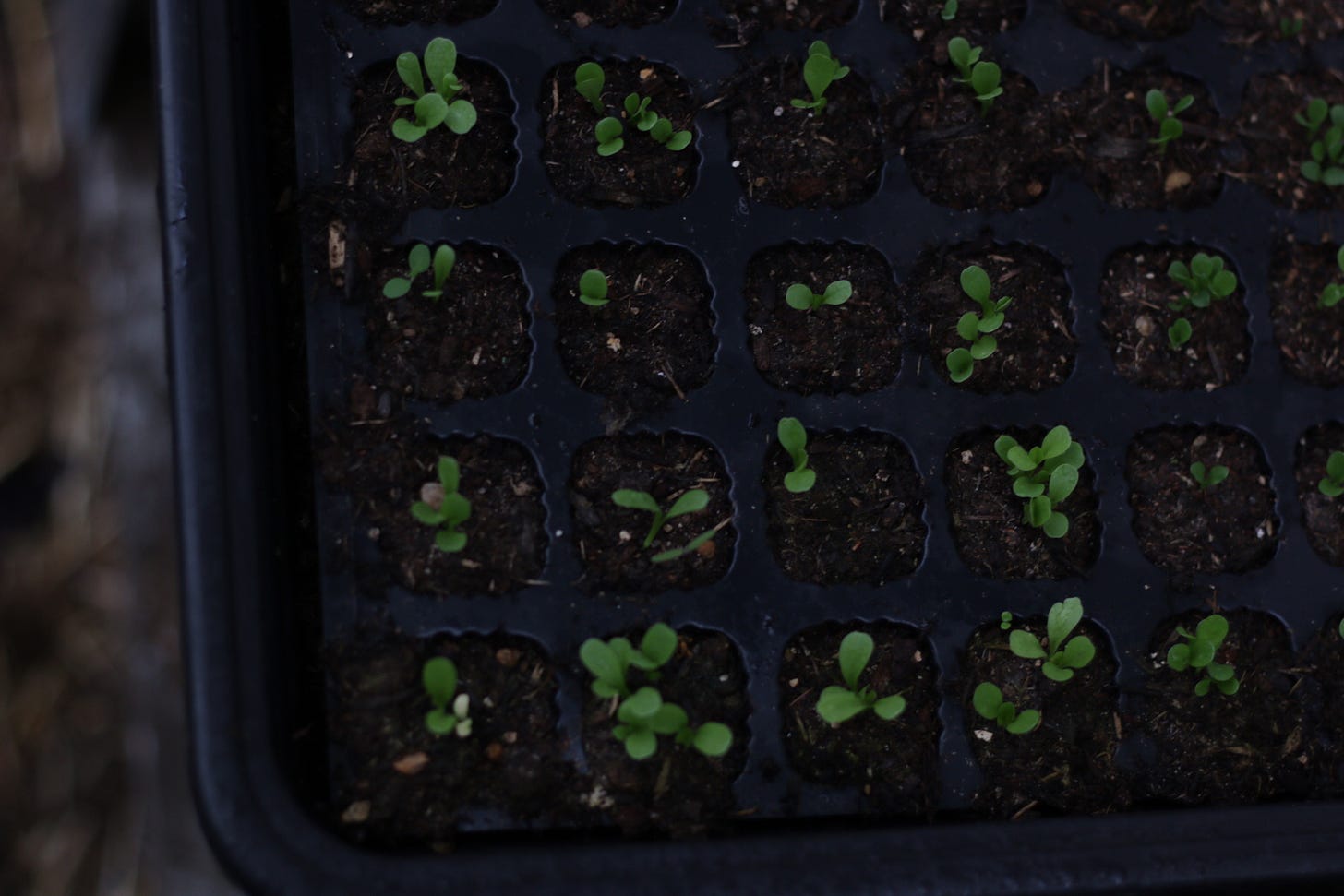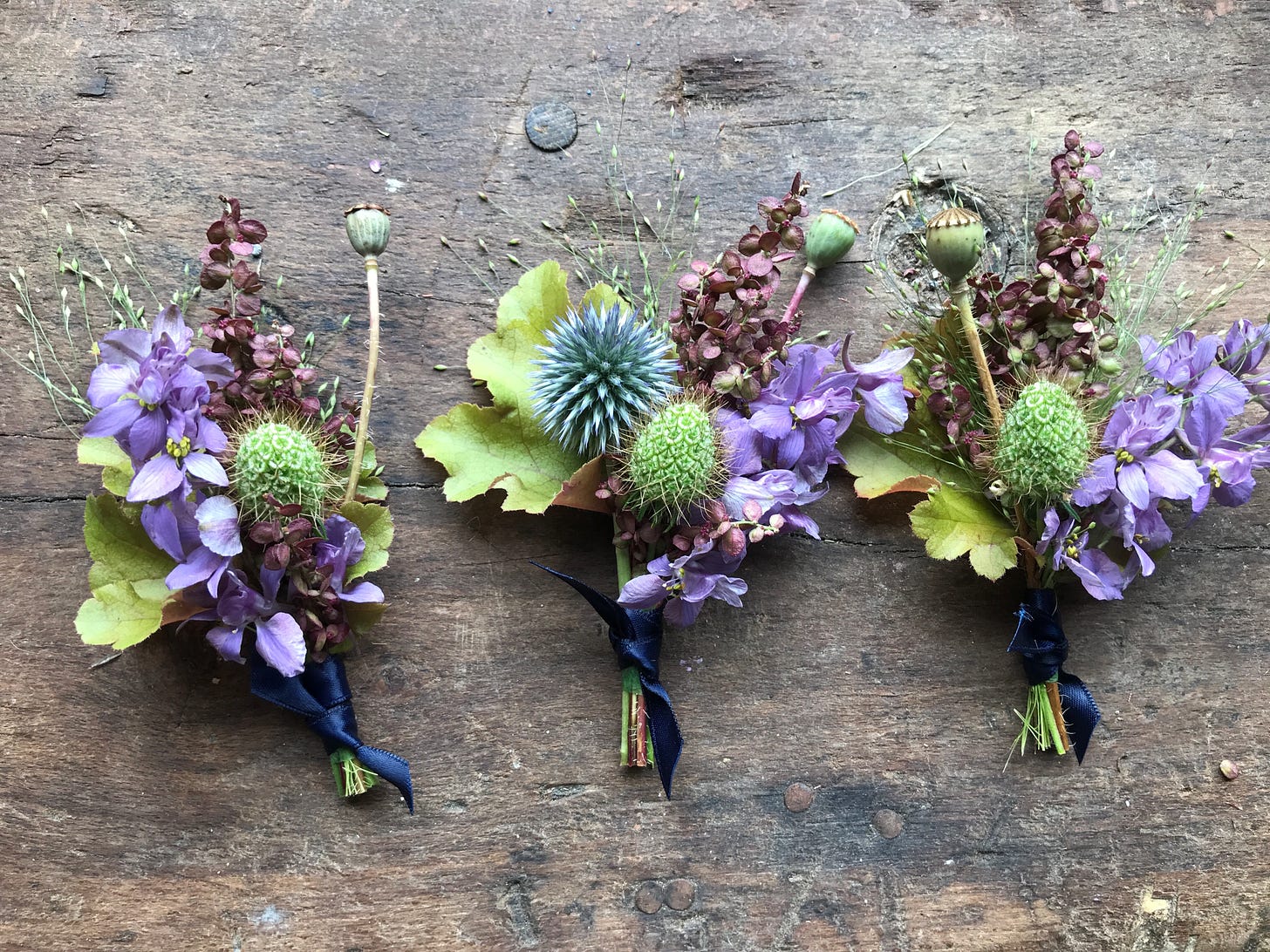August
Top tips for growing flowers; sowing perennials, lifting biennials and the holiday season.
Turn on, tune in and drop out for the hazy holiday season. It’s not a vigorous time anywhere let alone in the garden. For a blessed moment, one might have managed that interlacing of plants where the whole border rises and holds just for a moment in the exact way you saw it do in a garden magazine before an august storm crashes and flattens! It feels like 5pm on the horticultural clock, right on the edge of a tantrum and a funny half hour, it really could go any way. If you know, you know.
So enjoy it. I love that moment when it’s all a joyful tapestry of elbowing leaves. Pushing through dahlias up to my shoulders, not being able to see the other side, border edges blurred by toppling nasturtiums, ferny vines of cosmos and sticky tobacco flower leaves. You need waterproofs to harvest in the mornings heavy dew now laying like precious jewels on the oversized leaves of squash, courgettes and self seeded nicandra taking up their rightful space. By the afternoon everything is parched, and I can smell that late summer stuffy scent; a combination of hot dusty pavements, sun lotion and musty tomato leaves. I almost want to bottle it, but it’s not a pretty fragrance, more one of halcyon days.
Vegetable plots and flower gardens are an embarrassment of riches. Where we gave earnest attention to the first peas or cut narcissus months ago, now it’s a job to keep up with harvesting. To prolong flowering into September, I must cut flowers at least weekly, snip off spent ones before they run to seed telling the plant ‘you’ve done it, future offspring secured, no need to send more’ but keep them performing with a quenching feed (ideally a weak seaweed or comfrey tea sprayed onto leaves in the cool evening) and gathering of stems. In the afternoon, collect the seeds of those that you got to too late;, shaking into envelopes and storing in the cool.
Take scented geranium, pelargonium and salvia cuttings from non flowering stems and push around the edge of a pot of gritty compost. These take easily, securing tender plants that might be lost to the winter.
Sow perennial seeds this month too; into trays of compost and set aside in a sheltered spot out of frying midday sun. Erynguim, achillea, echinacea and rudbeckias will all germinate well and grow on to over winter before planting out in the late spring. Perennials are the future.
Harvest tomatoes, beans and berries before they over ripen and worse, drop off to the ground. It was eating these straight off the plant that convinced me that growing your own gave a flavour utterly unrivalled by supermarket produce. It might only be a precious handful but a sublime experience.
If it’s hot, plants might tire before their time but I’ll try to clear and sow a few green manure seeds in their place unless I have biennials of foxgloves, sweet rocket or wall flowers to plant instead. Green manures are a new discovery but these grow improving the soil structure, fertility and water retention with little help from me. They keep the soil active over the winter or as soon as you have something to replace them with. Remember nature (or the dreaded bindweed) loves a vacuum.
Or sow winter salads into the warm soil. There are so many varieties that take little attention and fill gaps like winter purslane, rocket and chicory. They’ll be the reason you’ll visit the garden in the winter and this time of voluptuous excess will seem like a foreign country.
AUGUST FLOWER GROWING TASKS
Last month I wrote that the ‘gardens are a little parched’; what a turnaround! Gardens are a little soaked! I’m pulling weeds easily and trying to open up around plants so fungal deacese don’t proliferate, especially around perennials. Have you staked your plants?
Sow Perennials & Hardy Annuals
Like the Christmas Perineum, a window of opportunity before the ‘Horticultural New Year’ to start as you mean to go on I say! There are perennials that if sown now will be flowering plants next summer. Let them grow on for another year and you’ve got a whole bed of plants that will repeat flower and return each year with little attention. Some of my favourites to sow now are echinacea, campanula and scabious. Annuals to later this month are corncockle and orlaya (this being far more reliably sown the year before and will flower very early in the tunnel or outside)Lifting biennials
There are foxgloves, honesty and sweet rocket that have self sown. This warm wet weather gift the grower with the ideal conditions to lift and move plants which usually would have to wait until September. I’m moving these into beds where they can grow together as a ‘crop’. Your May or June sown biennials may be large enough to plant out now. Or keep a little longer to root before planting next month.
Save seeds
On dry days I’m saving seeds. So far I’ve collected aquilegia, bupleurum, calendula, wallflowers, foxgloves. Some are only just dry ready to sow. I’ll take my chances with sowing these too. I wrote how your own saved seed is superior to any bought here and how to do it.Feeding and Staking
Weekly feed for pots and tomatoes, monthly for everything else. Stake any chrysanthemums, asters and rudbeckias rising and flowering now before they flop.
Cutting back
As expected, many perennials have flowered early and run out of steam. I’ve cut back cephalaria, canatache and echinops. They might flower again, but either way the beds have opened up to allow later Summer perennials to rise and flower above.
Harvesting
Shrubs - Physocarpus, berry foliage, branches of apples and plums.
Perennials - Persicaria, rudbeckia, aster, gaura, salvias, thalictrum, mints.
Biennials - Sweet williams are STILL going on the plots.
Annuals - All of them! Zinnia, sunflowers and rudbeckia sahara’s, nicotiana, achillea, cosmos, florists dill, snap dragons, scabious, cornflowers, silene, coreopsis, calendula, nasturtiums, sweet peas, cerenthe, nigella, feverfew, dianthus. Keep cutting and dead heading to prolong flowering. Atriplex has turned to seed (the perfect time to cut for arranging), panicum bursting with its fibre optic spurs and nicandra are about to flower before developing to black lanterns. And of course, Dahlias. Armfulls of Dahlias.
For more on all of these tasks this month, growing cut flowers, growing thoughts and anything else I am thinking about, upgrade for weekly emails. Every Tuesday direct into your inbox. Each month there is a floral recipe with combinations and methods for growing, cutting and conditioning for you gather the same. There is a lot of resource and support in the library which you’ll have full access to with a 14 day free trial.
If you live more locally to Saffron Walden, Cambridge or Essex, join me on my ‘Something for the Weekend’ newsletters on Saturdays with in person courses and classes, 1.2.1’s, event flowers or just a bunch for you.











